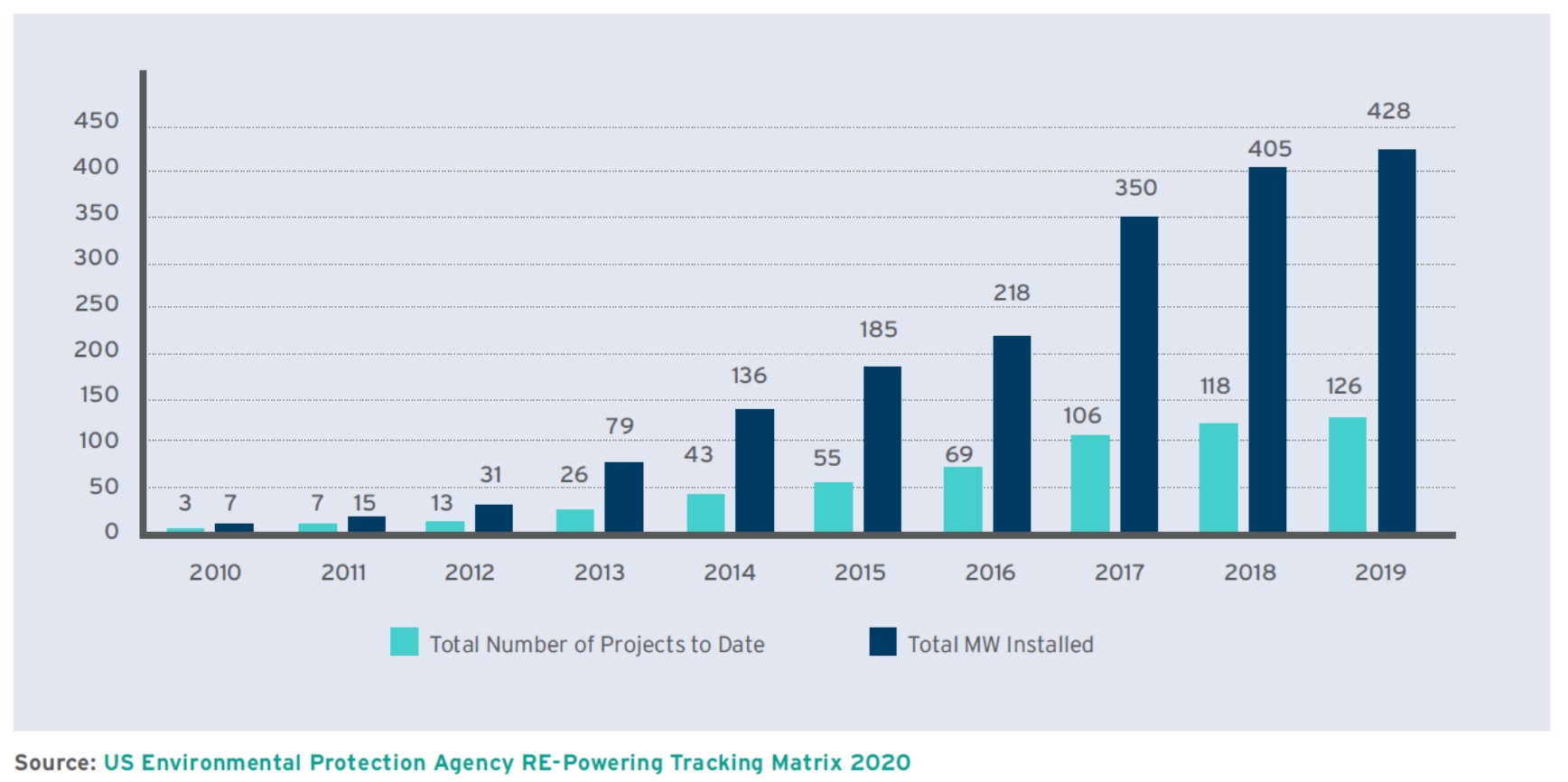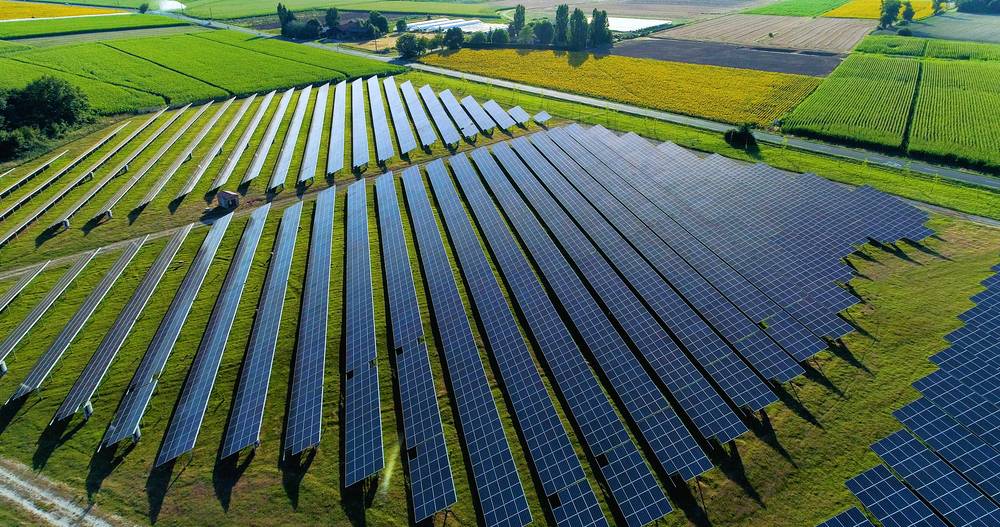The Inflation Reduction Act of 2022 included tax incentives for clean energy projects, particularly for brownfield sites that might be used for clean energy projects. The term “brownfield” is commonly used by community leaders and environmental regulators to describe a site with legacy contamination due to past land uses. Although not all landfills are officially and regulatorily classified as “brownfields,” they have also received much attention for renewable energy development, particularly utility-scale solar. This blog researches the prevalence, growth, and untapped market potential for solar development at landfills.
Why Landfills and Solar?
The US EPA reports 502 renewable energy installations to date on contaminated lands, landfills, and mine sites. Of those installations, 93% were solar photovoltaic, and 60% of the installations were on former landfills.[1] Those statistics mean adequate acreage is available at landfills to produce enough electricity to be profitable. Interestingly, 86% of all utility-scale landfill solar projects in the U.S. developed through 2019 were in just two regions: New England and the Mid-Atlantic states.[2] Overwhelmingly, solar developments in landfills were limited primarily to Connecticut, Massachusetts, New Jersey, and New York. The absence of solar developments in landfills in other states creates untapped market opportunities for solar developers, landfill owners, and operators.
Many cities and counties own or operate landfills that are actively operating or have been closed. And landfills have limited future reuse opportunities. Financially, closed landfills are cash sumps for the typical 30-year post-closure monitoring and maintenance period. Couple the number of landfills across the U.S. with the rapid growth of renewable solar energy and the ability to create future cash flow, and one can easily see opportunities for even more solar development projects in the near future.
Steady Growth So Far
The growth of utility-scale (defined here as 1 megawatt (MW) or greater in capacity) solar projects on landfills has been steady. 90% of utility-scale landfill solar projects have been built since 2012, and landfills owned by local governments have seen the most prevalent growth (79% of all projects through 2019).[3] The growth of utility-scale solar farms on landfills by both the number of projects and installed capacity is illustrated below:

Future Growth Potential
One estimate calculated that over 63 gigawatts (GW) of future solar capacity exists in the U.S. for closed landfills and those expected to close by 2030.[4] That total is nearly as much as the 89 GW solar capacity already installed for all types of sites as of mid-2020. Of that growth, 86% is from closed landfills that no longer accept waste.[5] Closed landfills are particularly attractive for solar development because future settlement rates are expected to be less for landfills capped more than ten years ago compared to younger landfills that were more recently closed.[6] Uniform and differential settlement can affect solar panel efficiency because the settlement alters array positions towards the sun.
In conjunction with the National Renewable Energy Laboratory (NREL), the US EPA recently developed the Best Practices for Siting Solar Photovoltaics on Municipal Solid Waste Landfills guidance document to assist municipalities, developers, communities, and other stakeholders with future solar redevelopment projects. The US EPA clearly sees the growth opportunity for landfills and solar arrays to produce carbon-free energy. That growth recognition will make future developments easier to approve and permit.
In Summary
In my experience, state regulatory program officials support the idea that landfills can be redeveloped to produce utility-scale solar electricity. The US EPA certainly supports that redevelopment potential. Suitable sites exist across the U.S. to generate renewable, carbon-free solar power. Landfills offer significant development potential for properties that otherwise have minimal future uses, and those opportunities can create future revenue streams and produce carbon-free energy.
References
[1] RE-Powering America’s Land Initiative: Project Tracking Matrix, US EPA, October 2022.
[2] The Future of Landfills is Bright, Rocky Mountain Institute, October 2021.
[3] ibid.
[4] The Future of Landfills is Bright, Rocky Mountain Institute, October 2021
[5] ibid.
[6] ibid.




